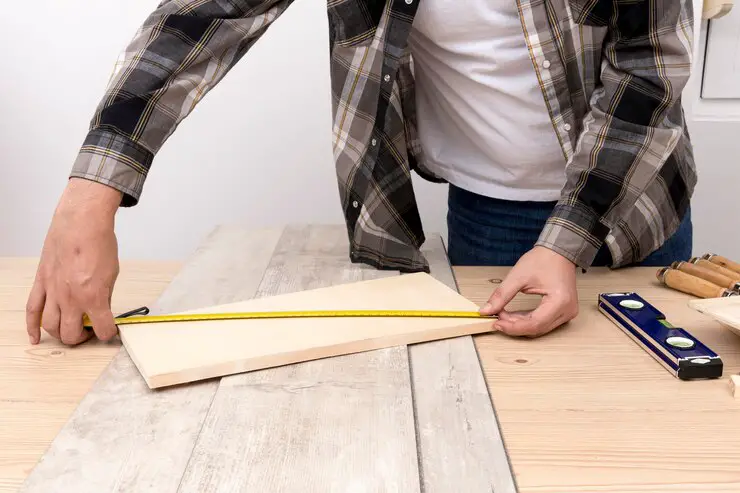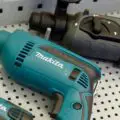Power Tools
How to Cut a Baseboard Corners – A Woodworking Tool Guide
In most modern homes, your walls and floors will typically meet at a 90-degree angle, and this is a region most of us like to keep out of sight or covered up for a variety of reasons. The solution for most of us is the use of a baseboard, which is a trip of wood that runs along the entirety of this joint. Whether you’re a beginner trying to learn how to cut and install baseboard corners or an experienced contractor, the process of cutting baseboards is more or less universal.
The techniques, tools, and approaches you can employ will not vary regardless of the type of project involved. The basic design is straightforward for most people, but many people face challenges when it comes to cutting out the corners. The difficulty for most people is that for these joints to work well and look their best, the joints must align and lap perfectly.
There are different approaches you can use to achieve high-quality baseboard corners, and different tools will be required for each one of them. In this post, we’ll explore some of the most effective and accessible ways to cut baseboard corners with the hope that this may also serve as a woodworking tool guide.
Let’s dive right in.
Cutting Baseboard Corners Using Miter Saws
Miter saws are some of the best tools to use while cutting baseboard corners, thanks to their ability to cut out perfect 90-degree angles. This is ideal for this type of job since these are the angles baseboard corners take, allowing the edges to overlap to perfection and result in a pleasing corner.
They come with crosscut blades with multiple teeth and have adjustable angle settings, making it possible to cut boards at any angle you desire. Here’s how to work with a miter saw:
Mark and Measure the Direction of Your Cut
Take a tape measure and pencil and measure our wall so that you obtain the precise positions you want to place on your baseboard. Make a mark on the outer and inner limits of the intended corner, keeping in mind that the outside edge will be slightly longer than the wall length.
Adjust the Angle of Your Saw
Your saw angle will differ slightly depending on the position of your board, so make your miter angle the appropriate size. Adjust the boards using measurements taken with your bevel.
Cut the Baseboard Corner
Clamp the board down in the desired position, place the blades at the set marks, and begin cutting. Only cut once the saw has powered fully. Take a hand sander and clean the cut area to make it smooth afterward.
Using a Table Saw to Cut Baseboard Corners
Because miter saws can be difficult to get a hold of if you’re not a woodworking professional, table saws are a great option for getting the job done. Here’s how to get it done:
Measure and Cut Your Board Pieces
Due to the nature of table saws, you’ll first need to cut them down into manageable pieces. Measure out the appropriate sizes and run them along the table for the saw to handle.
Mark the Cut Lines
Take your pieces and carefully measure the angle you wish to cut along (45 degrees). Keep in mind that the outer edges of these boards should be slightly longer than the inner limits.
Cut the Board
Take the prepared boards and run them along the table saw’s path. To achieve the smoothest line possible, let the blade do its job without adding too much pressure of your own to it. Lightly guiding the wood along the path should be more than enough effort on your part.
Using a Circular Saw to Cut Baseboard Corners
Another choice at your disposal when figuring out how to cut baseboard corners is to use a circular saw. These are saws that can be found in most people’s toolsheds, but many people might not consider them their first choice when it comes to projects such as this. It’s possible to use a circular saw when you don’t have access to more precise options such as miter saws, even though the outcome might be slightly rougher along the edges (a hand sander will take care of this).
Thanks to how circular saws are designed, you can operate them while holding them in your hands and manipulate them to create angles as precise as miter saws. Here’s how to work with a circular saw:
Cut and Measure the Length of Your Boards
Take your tape measure and use it to determine the length of the wall to be baseboards, taking note that you’ll need some extra length on the outer edges of your pieces. Use the circular saw to cut the boards down to the desired size.
Measure the Mark and Intended Angle
Once you have boards of the desired size, make marks at 45-degree angles on adjoining pieces so that they will make a clean 90-degree corner when placed together.
Make Your Cut Along the Line and Angle
Thanks to the fact that you can operate a circular saw while holding it conveniently in your hands, it will be possible to narrow down your angles and create precise cuts and angles. Be sure to hold the saw steady along the lines you marked out and let the saw warm up to full speed before making contact with the wood.
Why You Should Trust Us
At Woodworking Tool Guide, we know one size doesn’t fit all! We cater to every woodworker, from beginner to pro, with insights and recommendations tailored to your skill level, project needs, and budget. We take the guesswork out of choosing the right tools, whether you’re tackling your first crafting a masterpiece for the ages. So grab your chisel, join our community, and let’s build something amazing together!
Woodworking Tool Guide wasn’t just born, it sprouted from a seed of passion for the craft. What started as a joyful exploration blossomed into a trusted online haven for fellow enthusiasts like you. We pour our love into meticulously chosen review selections, meticulous hands-on testing, and lab-backed insights, all to empower you with reliable, comprehensive information you can build on. So, grab your tools, trust our guidance, and let’s build something beautiful together!
Passion-Driven Expertise
Our journey started with a shared love for woodworking. The team behind the Woodworking Tool Guide is comprised of individuals who are not just writers but passionate woodworkers themselves. This shared enthusiasm ensures that our content is crafted with a deep understanding of the craft and an authentic appreciation for quality tools.
Top Tool Guides Online
Woodworking Tool Guide has rapidly ascended to become one of the premier online destinations for tool guidance. Our commitment to excellence and the accuracy of our information has positioned us as a reliable source for both beginners and seasoned woodworkers seeking trustworthy advice on the best tools for their projects.
User-Centric Approach
Our content caters to every woodworker, from rookies just starting out to seasoned pros tackling intricate projects. We tailor our insights and recommendations to your skill level, project needs, and budget, ensuring you find the perfect tools to match your unique woodworking journey. So step into your workshop, grab your tool belt, and let Woodworking Tool Guide be your trusted companion as you craft your masterpieces.
Continuous Support and Innovation
Woodworking is an ever-evolving craft, and so is our commitment to supporting you. We are dedicated to bringing you the latest information on woodworking tools, techniques, and trends. Our team is actively working to expand our content and bring you more valuable insights, ensuring that you stay well-informed in your woodworking adventure.
Hands-On Experience
Ditch the endless research rabbit hole! At Woodworking Tool Guide, we believe in actionable advice, not armchair analysis. We get our hands dirty, putting every tool through its paces in real-world woodworking scenarios. Whether it’s the precision of a table saw, the versatility of a router, or the tactile satisfaction of a handplane, we test for performance, durability, and user-friendliness. No more sifting through dry specs – we deliver practical insights you can trust to transform your woodworking dreams into reality.
Woodworking Tool Guide isn’t just a review site, it’s your trusted companion on the sawdust-filled path to woodworking mastery. Our expert team, led by veteran David Jones, meticulously tests and explains tools in terms you understand. We cut through the jargon, bias, and confusion with real-world insights and honest evaluations. Join our passionate community, where decades of experience, cutting-edge knowledge, and shared love for the craft come together to guide you every step of the way. So grab your chisel, buckle up, and let’s embark on this exciting woodworking adventure, together!
Final Thoughts
Baseboards can be simple, utilitarian additions to your home or intricately decorated installations, but the overriding factor influencing their value is how well their corners match up. Shoddy baseboard corners might result in leakages, poor aesthetics, mold, and a host of other unwanted outcomes.
There are various tools you can use to get a proper baseboard corner-cutting job done, but the woodworking tool guide we’ve covered will be useless if you do not use the best quality equipment. If you’re looking for the ideal woodworking tools for any DIY projects you might have in mind, never settle for less than the highest quality. Best of luck!





